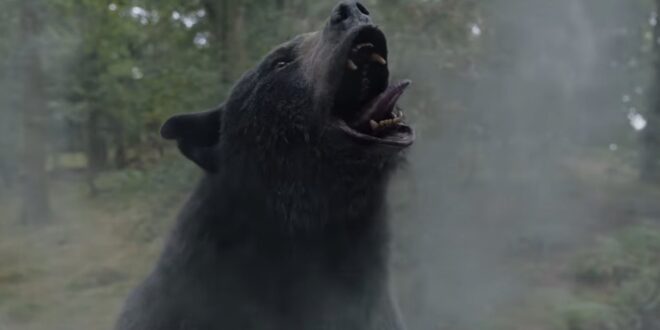“Alright hear me out, a bear… Does cocaine… A Cocaine Bear… ”
“I love it! We’ll give you $35 Million Dollars!” – A conversation definitely had at Lord Miller Productions, Brownstone Productions, Jurassic Party Productions, and Universal Pictures.
I’m not going to lie, this was a movie I walked into expecting to hate. Horror comedies usually aren’t my thing. Some people love them (Evil Dead Fans for example) but it’s just not my cup of tea. Plus at first, it sounded like a movie formed entirely around a gimmick, which isn’t inherently a bad thing (E.G. Leprechaun) but usually, it’s not a great sign.
What I am very happy to report is, this is definitely my favorite horror comedy that I have ever seen. (One of our other writers agrees). At no point did I feel like this was just an excuse to bait everyone into buying a ticket. It wasn’t a perfect movie. I did feel like yelling at the screen a few times, mostly because this movie about cocaine seemed to be written by someone who knows nothing about cocaine, but other than the few critiques I’ll mention in this review, I thought it was a nearly perfect execution of a very odd premise.
*WARNING: Light Spoilers Ahead*
Nothing I’m about to say will ruin the movie, but I need to say just enough to express my opinions in a concise way. If you haven’t seen it, take my word and buy a ticket as soon as possible. Preferably during a time when there will still be a packed theater because this was the best crowd I’ve had in a theater in a very long time. If you have already seen it or don’t mind the vague scenes described, continue ahead.
Phew, now that’s out of the way let’s get into it. Feel free to skip around the categories I laid out below and read the ones that you care about.
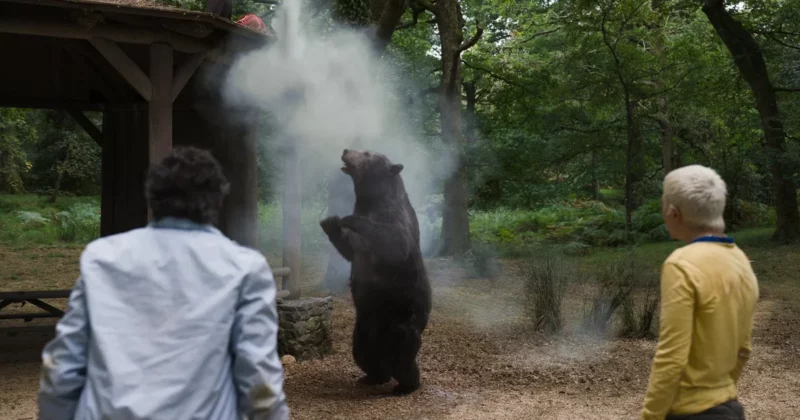
COCAINE BEAR (2023)
STORY
This is the extent that most reviews will extend to, but as you will find out, this will be a (very) comprehensive review that will go over several technical aspects of the film and a few subjective opinions outside of the story. Anyways, onto the story. It’s a weird premise, but for some reason, it works.
This is essentially a monster movie that takes place in the woods. Once you see it as that, you start to realize how much fun you are having. It is funny, the dialogue is realistic and witty, the story is interesting, and at no point did I ever feel bored. It’s hilarious, suspenseful, gory, and kept me interested and on the edge of my seat waiting to see what comes next.
For this category, I’m gonna keep it fully spoiler free because you’ve either seen it already and don’t need me to tell you what this movie is about, or you’re thinking about seeing it and don’t need plot points spoiled, and this movie definitely will benefit from you going in blind. Just trust me, it’s a great story and is constantly fun.
I rank their work in this category at a 9 out of 10
CINEMATOGRAPHY
Cinematography is the art of camerawork. I’m going to go into technical jargon a bit, but I’ll keep it understandable to a layperson.
This film looked stunning. As far as movement, the shots were very carefully planned and executed with the intention of giving the film a very large scope. This is very effective and gives the story a sense of scale, a feeling that you are deep into a forest and there is no way out. It gives a feeling of isolation in a massive national park. This is important because the number of locations is relatively small and most of the movie takes place in the park.
As far as the regular composition of the shots, there was nothing that stood out as being interesting to me, except for the depth of field. Depth of field, or DoF, is a term describing the scope of how much distance from the camera can possibly be in focus or have a clear picture. Everything outside of this range will be blurry. They used lenses that could let a lot of light in (We’ll get into that later,) and the more light the lens lets in, the fewer of the items in the frame will be in focus.
This can be a good thing or a bad thing depending on the “look” you are going for. But if you know what you’re doing you can use both “shallow” and “wide” DoF in the same scene. They opted to not do this, but instead, they changed DoF between scenes, which makes it much less likely anyone will notice any glaring differences.
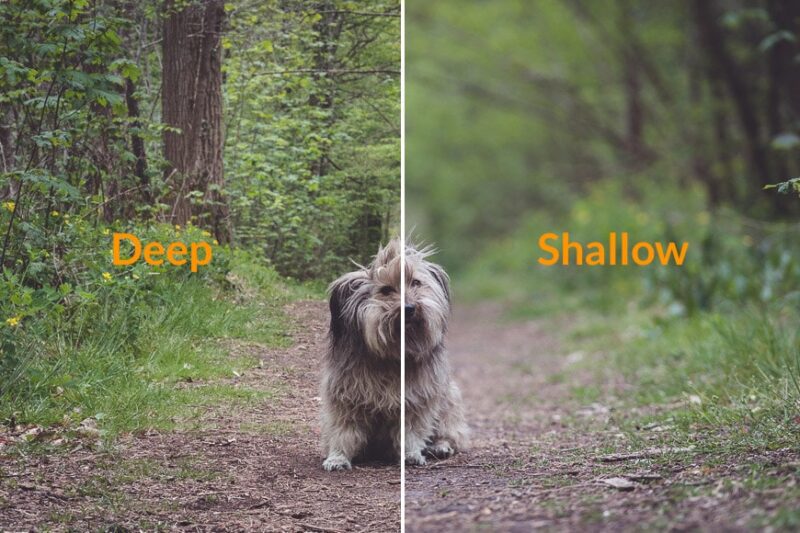
These differences show up because you are quite literally changing how much light the camera sees. Imagine the difference between wearing sunglasses and staring directly into the sun, that can be the variance of light coming into expensive lenses. That means you have to artificially add light into the scene and match the luminance, color, and harshness of shadows of everything in your frame.
That’s the end of technical jargon in this category, my point is that as far as I noticed there were two styles of a scene. A scene’s background and foreground were either blurry, leaving only a little space for the subject, or mostly in focus, which is often not as pretty as when you can see a blur. Think of the portrait mode on your phone, it makes the texture of the scene seem more dynamic and naturally more beautiful. It also puts the viewer’s focus on what is happening in the small range that they can actually see.
This isn’t a problem, it just can be jarring switching back and forth when you know what to look for. But unless you work closely with cameras you won’t notice it.
This is an easy 7 out of 10, closer to an 8 than a 6
LIGHTING
The lighting in Cocaine Bear always makes sense. It is normal when it should be, and it is dark when it should be. That isn’t always a good thing though.
99% of the movie looks great, but when it gets dark, that becomes another story. It focuses on making the scene seem realistic instead of watchable, which is very far from what the story, sound, and camera all aim to do. James Gunn’s Suicide Squad suffered from the same affliction.
So why is this a problem? Well… People like to watch movies on their TVs, and a lot of the time they’ll watch during the day. Now imagine your TV is anywhere near a screen door or window. If you’re watching in a bright room or have sunlight on the screen, say goodbye to seeing anything that’s happening on screen. This also happens with dim projectors at drive-in theaters so if you frequent those I highly encourage you to go to an actual theater. I was sitting pretty close to the screen in a dark theater with a bright projector and at times it was hard for me to see what was going on.
There’s a possibility that they will edit the film to be brighter when it releases, but there are some problems with that. Enter technical jargon!
Again, I’ll keep this simple. There are two ways you make a film dark. You either shoot with a lot of light and make it dark after it’s shot with a “color grade,” (which is basically a method of making the scene darker or lighter and changing the colors to make them more interesting) or you shoot it without a lot of light and keep it looking like it does to your eye.
The basic rule is that you always shoot with a lot of light and make it darker with a color grade because making a shot look darker is way easier than previewing your film and realizing it’s too dark and trying to make it brighter, which is nearly impossible without ruining the look of the scene.
It’s not cut and dry though, if you accidentally make a scene way too bright and you try to make it look dark with the color grade, it will look fake. That’s why filmmakers will usually go to great lengths to avoid “Day to Night Scenes,” or scenes shot in the day that they try to darken and tint blue to make it seem like it’s nighttime. A notable example is Twilight, which was all shot during the day. The night scenes just looked like someone put a blue filter over the camera lens.
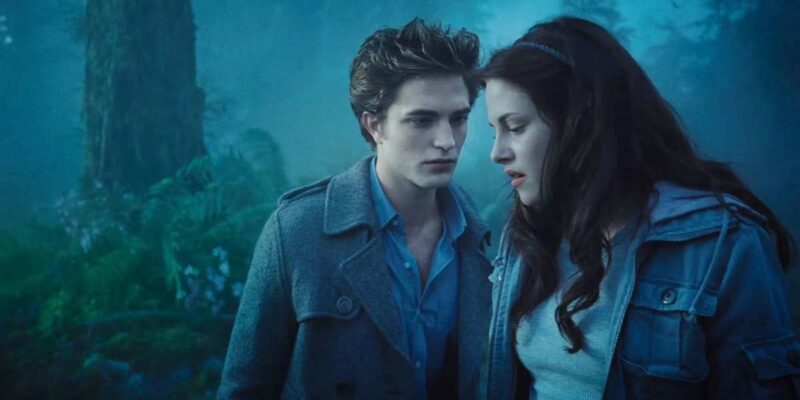
So there’s a delicate balancing act that the Director of Photography and Lighting Designer has to navigate. Unfortunately, they kinda fell off the tightrope when it got dark outside because it was difficult to see anything during the most important point in the movie. It’s an easy mistake to make, and they both decided smartly not to ruin it in the theatrical cut by trying to brighten it and leaving it dark. They may try to do some work on it when it goes to streaming, but it can’t be heavy work or else it’ll look bad.
There’s always the possibility that it was a dark color grade, but to me, it seemed like there weren’t too many shadows or reflections from the rocks, and the rocks didn’t give the impression of being treated or fabricated to not show the reflections or shadows. I can only guess without seeing any behind-the-scenes pictures, but it would have taken a very bright light to correctly light those scenes and I feel like it would have been more noticeable to me.
It is also worth noting that daily edits are often reviewed in a screening room, which is essentially a small movie theater designed to accurately give a preview of what the film will look like on the big screen. If it was a color grade then they should have noticed it was too dark and fixed it, so I fully believe that it was a mistake in production.
I rank this category at 5 out of 10. No shame in a 5, by my metrics that’s completely average.
SOUND DESIGN
Back to the praise. Everyone who worked on the sound for Cocaine Bear deserves a raise. The rumble from the bear’s growl could be felt in the theater, and the surround sound was great. Everything sounded clear and realistic, and all the sound effects sounded great as well. The music wasn’t intrusive and added to the scene while staying in the background.
There’s an analogy that the horror director John Carpenter uses, music in a film should be like wallpaper. It should add to the room it’s in, but not distract from the contents of the room itself. There are of course exceptions, like Star Wars for example, but this is a great rule to follow, especially if you are making a horror movie. Ignore the fact that John Carpenter personally wrote the iconic theme to his movie Halloween which is one of the best horror themes ever made.
This is an 8 out of 10.
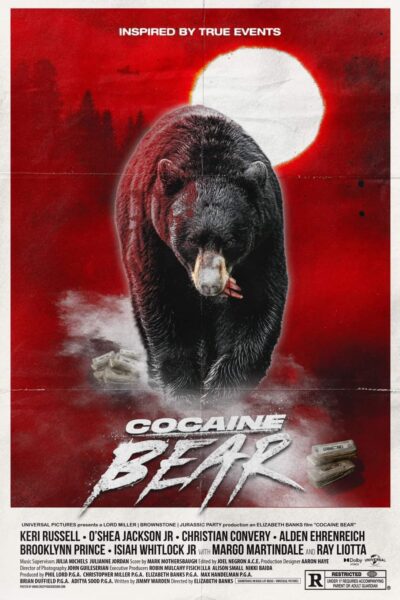
ACTOR PERFORMANCES
The actors did a great job, especially the child actors. Good child actors are very hard to come by, oftentimes just because of inexperience, but they did great casting these two. Always believable, both in the delivery of lines and physicality or how they move around.
That applies to all of the actors actually. The casting choices for everyone seemed perfect, their personality seemed to personally belong to them. Their looks all fit as well. The ranger especially stands out, she looked like exactly what I would have hoped for based on her character. Every character interacts with the scene in big ways, except for one of the first ones you ever see, who still came back to have a purpose, but a very small, insignificant purpose.
I give the actors a 10 out of 10. They did fantastically!
PACING
In the beginning, it seemed like the filmmakers were urgently trying to get into the meat of the movie and keep everyone’s attention. This is a good strategy, it means that they care about keeping the story interesting and making time for what everyone came to see. However, the issue comes when a filmmaker rushes the story.
There were a lot of moving parts in Cocaine Bear, a ton of characters across multiple state lines, different backstories to introduce, and different plotlines and motivations for the characters. Introducing everything could have taken up half of the runtime of the movie if they had let it, so they didn’t. They chose to throw everything at you as fast as they could so they could get going.
Unfortunately, this just feels jarring, jumping back and forth between eight characters across several states, explaining all of their backstories enough to make them interesting, and even explaining the character relationships. All of that needs to be done, but as I have discussed in the lighting section, filmmaking is all a balancing act, and when you’re making a major motion picture it is important to keep from falling into the side of “This is the most boring thing I’ve ever seen!” or the side of “Wait what just happened?”
Luckily for them, the introduction scenes were interesting enough to keep your attention, and this didn’t affect my enjoyment, it just felt jarring and choppy to me. To anyone who watched it and didn’t notice it, I call back to the adage, “You may not have noticed it, but your brain did.” Essentially even if you weren’t aware of the choppiness, your brain still processed it in the background and it affected your perception of how much you enjoyed the beginning.
The rest of the film was paced excellently, however, and I thought it was near perfect. It’s just the beginning that made this category notable.
I rank this category an 8 out of 10

REALISM
If you haven’t seen Cocaine Bear yet, skip this category because it might ruin the movie for you. I go into great levels of detail about things most people wouldn’t notice or care about below, but I am describing my subjective experience here so I’m gonna mention this.
If you’re still around, one of the biggest things that can take me out of a movie is when I see something and just don’t believe it. There’s some cinema theory that I’ll be talking about that describes why that is. Some of you may have heard of this term, it’s called suspension of disbelief.
Essentially the goal of a writer is to make the audience not care that the things you are writing are made up. Take Superman for example. People can’t fly, but he can, and there’s a reason for that. He is an alien, and since there are no rules about what aliens can do, you have no problem believing that an alien can fly. Therefore your belief in the story is not broken, or in other words, your disbelief has been suspended… for now.
Now that you have a basic understanding of what it is, let’s talk about what I both believed and didn’t believe in this story’s universe.
First off, full disclosure, I have never done cocaine. (Stop reading here mom, go ahead and skip to the next category.) I have friends who did a lot of cocaine at points in their lives so I was naturally around it a bit but seeing the extent of their addictions scared me enough to not want to try it. My point is that I have a working knowledge of what coke does and doesn’t do, and for everything I don’t know, I have done extensive research after the fact to confirm my suspicions with many very boring scientific papers that seem to go on forever.
It’s been a large review up to this point so I’ll make this a little easier on you and give you everything that took me out of the movie at once and cite my thoughts later if you care to read.
- One of the characters should have been high off of a lot of cocaine for most of the movie if they even survived it¹
- A bear would likely not survive the amount of cocaine it ingested²
- Cocaine would not turn the bear superhuman, although it may think it is³
- Cocaine doesn’t look like, or physically act like that⁴
¹Cocaine can be consumed in many ways, both orally or sublingually (Under the tongue.) This character ate a good amount of it, and a lot of it stayed in his mouth and most likely ended up under his tongue. The amount that stayed under his tongue would very quickly cross the blood-brain barrier and get him very high, very quickly. 30 minutes later he would be obscenely high from the ingestion of loosely about $1,000 worth of cocaine. ($1,600 not accounting for the amount he spits out.) In fact, I’m willing to bet that considering who this character is, he would have overdosed very quickly. If he somehow survived the cardiac arrest, he would most likely be too wired to do much of anything.
²For the same reason the above character would have likely died, the bear also would be dead. She eats a lot of it. I started to count how many kilograms at first but I gave up once it became absurd. Let’s start with a bear eating one brick, or kilogram. In the United States that is anywhere from $15,000-$45,000 worth of cocaine. A bear is big, but not big enough to survive eating an entire kilo of coke. In fact, in the true story that it claims to be based on, the bear dies shortly after eating the first batch. Yikes.
³In a world where a bear can eat dozens of kilos of cocaine, it would not have superpowers, it would definitely get very violent, but not turn into a supervillain. It would be more likely that it would perceive itself as being able to run fast and be strong, but not actually be fast or strong.
⁴Alright, this is a dumb point but it still broke my belief in this film’s universe. The look and texture of cocaine are naturally crystalline. It doesn’t start to look powdery until it is cut heavily or chopped up beforehand. If someone sold you cocaine that looks like that then it is definitely 99% diluted by anything from laxatives to laundry detergent. This is claimed to be cocaine straight from Columbia, which is usually raw and undiluted.
Yep. That’s it. Four things that bothered me in a 95-minute movie. I’m very nitpicky so it is rare for me to only be bothered by four things. Not to mention that 98.3% of Americans would have no reference to anything about cocaine outside of movies.
The dialogue all sounded like it belonged to the characters who were saying it and I enjoyed how no characters did something that didn’t make sense the entire movie.
If I’m being honest I would give Cocaine Bear a 4 out of 10 for realism. The rest of the film made up for the annoying bits and landed it a score just below average
GORE
The movie was bloody and intense. A person I went with didn’t like gore, so he said he wouldn’t see it again, but to any freaks like me who enjoy film gore, it was done in a very, very fun way. The effects all seemed largely practical as if they weren’t made on a computer.
I’m not going to talk about my favorite specific bits since it’s something you should definitely enjoy yourself, but my favorite gore scene was done in a very funny way with a gun. The second place was taken by the scratch that the Ranger got, it looked great and was in a fun place.
I’m rating this at a 9 out of 10. Comically absurd but always fun.
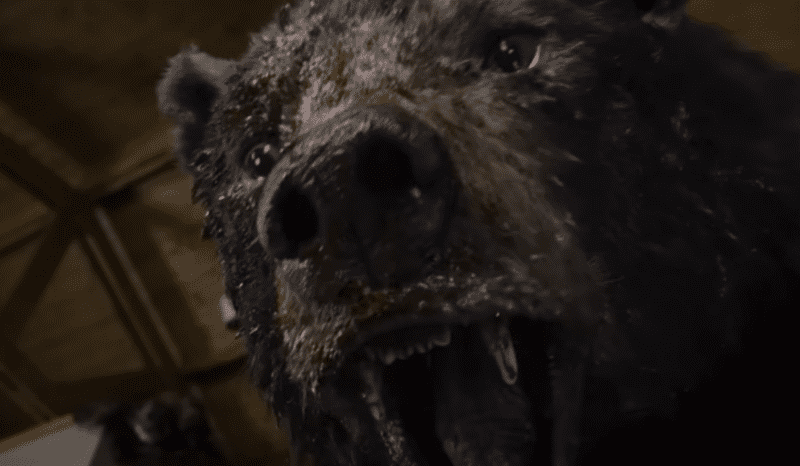
COMEDY
Cocaine Bear has the foresight to realize that when people are scared, they won’t be nearly as susceptible to comedy, and when people are laughing, they won’t be scared as much. A lot of times the film was either Action, Horror, or Comedy, and not both or all. In my opinion, this was a great idea as it kept every scene notable in its own way, and didn’t feel like a string of things constantly trying to be funny while scary things were happening.
This is the reason why I like to stay away from overt horror comedies because it just becomes a one-toned drawl of things that failed at both horror and comedy because it all happened at the same time.
There are some exceptions to their basic rule of having times dedicated to horror and comedy, and there are some funny and ironic bits, but that’s usually in the more action-filled sequences that don’t feel too much like horror.
I rank this at a 7 out of 10. Not gut-bustingly funny, but enough to make people in the theater laugh.
COCAINE BEAR – CONCLUSION
As the movie ended and the credits rolled I turned to the people I was sitting with and told them flat out, “That was an easy 9 out of 10” which is something I nearly never say. (We will see what my final score actually is below)
I’m a screenwriter and director who works closely with every department, which often ruins every movie for me because I’m constantly critiquing people’s work.
The amount of research I did for this article itself often seems to surpass the amount of effort some people put into making a story believable to everyone. I also hate it when the writing suffers from “PEOPLE DON’T TALK LIKE THAT!” Syndrome. That is when I throw tomatoes at my TV and scream into a pillow because the people I’m trying to invest upwards of an hour and a half into don’t act like human people. This film does not suffer from this affliction which makes me a happy boy.
So do I recommend Cocaine Bear? Yes! Go see it! If they just knew more about cocaine it would have had a vastly higher score.
Congratulations, you made it to the end. I’ll go make some cookies as a reward for you reading 11 pages of me critiquing a movie about a bear who likes drugs. If you liked this article, stick around for my next (very) Comprehensive Review. Oh but first… What did my final score turn out to be?
Cocaine Bear Rating – 7.3 out of 10!
(Keep in mind the average film is a 5/10)
Cocaine Bear is now showing in theaters everywhere.
 PopHorror Let's Get Scared
PopHorror Let's Get Scared
